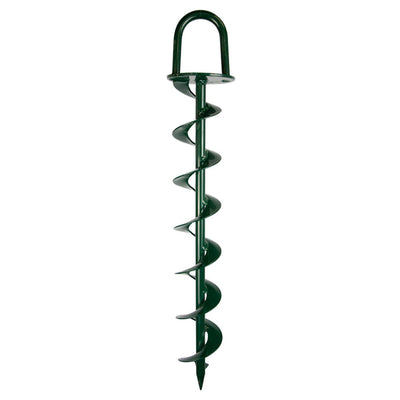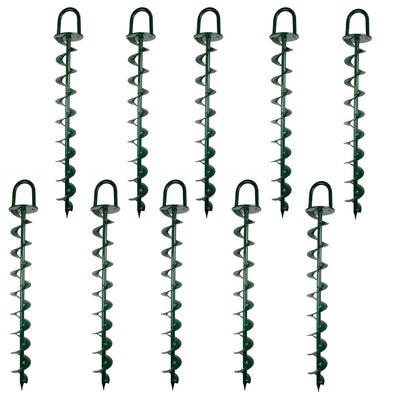Frequent Errors When Using a Ground Anchor for Security
Frequent Errors When Using a Ground Anchor for Security
Blog Article
Explore the Different Types of Ground Anchor for Your Following Job
From auger anchors, which excel in diverse soil problems, to stake supports created for short-lived setups, the options are countless. In addition, concrete and screw supports present unique advantages in particular scenarios, while deadman supports are customized for applications calling for resistance to lateral pressures.

Auger Anchors
Auger anchors are a preferred option in different building and construction and landscape design projects due to their one-of-a-kind design and effective securing capabilities. These anchors contain a helical screw-like shaft that is driven right into the ground, enabling a secure and protected hold. The spiral layout assists in very easy installation and makes the most of resistance against lateral forces, making auger anchors especially reliable in applications such as secure fencing, temporary structures, and erosion control.
The installation process of auger supports is reasonably straightforward. They can be manually or mechanically mounted, relying on the dimension and needed deepness. This adaptability enables their usage in diverse soil conditions, from sandy to clayey terrains. Moreover, auger anchors can be conveniently removed and recycled, which adds to their cost-effectiveness and sustainability.
Among the substantial benefits of auger supports is their ability to distribute lots uniformly across the bordering soil, reducing the threat of dirt disturbance and lessening environmental influence. Additionally, they are much less vulnerable to heaving or loosening gradually compared to conventional securing methods. Auger supports are an excellent option for tasks requiring sturdy and dependable anchoring services.

Risk Anchors
When it comes to protecting frameworks in a variety of outside applications, risk anchors use a uncomplicated and dependable service. These supports are normally built from resilient materials such as steel or aluminum, made to withstand ecological stress and anxieties while providing optimum security. Their basic design enables quick setup, making them a perfect selection for temporary or permanent anchoring requirements.
Stake supports are especially helpful in securing tents, covers, and various other lightweight frameworks against wind and weather. They work by being driven into the ground at an angle, developing a solid hold that withstands pull-out forces - Ground Anchor. The performance of stake supports depends on numerous elements, consisting of dirt type, moisture web content, and the angle of installation
For added protection, many risk supports feature accessory points for bands or ropes, enabling tension modifications as necessary. In applications such as landscaping or building and construction, they can successfully stabilize devices or frameworks on irregular surface. Overall, stake supports supply a versatile and cost-effective service for securing different outside setups, making them a favored selection for professionals and DIY fanatics alike.
Concrete Anchors
Concrete supports supply a durable option for protecting structures to concrete surface areas, making certain stability and security in numerous applications. These anchors are necessary for tasks varying from domestic constructions to large commercial installments. They are available in various types, consisting of growth supports, sticky anchors, and undercut supports, each developed for particular tons requirements and environmental conditions.
Development anchors rely on mechanical mechanisms to grasp the concrete when mounted. They are suitable for tool to sturdy applications. Sticky supports use high-strength epoxy or resin to bond the support to the concrete, offering premium load-bearing capabilities, especially in broken concrete circumstances. Undercut supports create an one-of-a-kind shape within the concrete, supplying phenomenal holding power, specifically in applications where tensile tons prevail.
When performed correctly, concrete supports considerably enhance the architectural honesty of different projects, making them vital in modern-day construction practices. Comprehending the particular requirements of your job will assist in choosing the best kind of concrete anchor for the task.
Screw Anchors

Screw anchors are a flexible securing option that can be efficiently utilized in a selection of applications where conventional concrete anchors might not suffice. These anchors are composed of a helical design that permits them to be easily driven into the ground, making them suitable for use in soil and other substratums. Their special framework provides excellent holding power and resistance to pull-out pressures, making them appropriate for many tasks, from landscaping to architectural assistance.
One of the primary advantages of screw anchors is their ease of installation. They call for very little tools and can typically be set up without the requirement for excavation, which conserves both time and labor expenses. Furthermore, screw anchors can be gotten rid of and recycled, providing a lasting option for temporary applications.
Screw supports are especially valuable in locations where soil problems are challenging, such as loose or sandy dirts. Their capacity to be installed at varying midsts enables personalization based on certain job requirements. In general, screw anchors give a reliable and trustworthy anchoring technique, making them a superb choice for engineers and service providers looking for effective options for their tasks.
Deadman Anchors
Deadman anchors offer as a durable solution for stabilizing structures in challenging conditions, especially where standard anchoring techniques may fail. These anchors include large, hefty things hidden underground, which produce resistance against side forces. The style usually includes a straight element, such as a block of concrete or a metal plate, buried in the dirt, to which bands or wires are affixed.
The efficiency published here of deadman supports hinges on their ability to disperse lots over a larger area, minimizing the risk of failure in unpredictable dirt conditions. They are specifically valuable in applications such as keeping wall surfaces, short-lived frameworks, and slope stabilization, where dirt motion can compromise the stability of the structure.
Installment of deadman anchors requires mindful preparation to ensure they are positioned at the appropriate depth and orientation, optimizing their load-bearing ability. While they may call for more labor and material than lightweight anchors, their reliability in negative conditions makes them important for lasting jobs. Deadman anchors are flexible and can be adapted to different applications, making them a go-to option for designers encountering distinct challenges in their projects.
Conclusion
Auger supports excel in diverse soil conditions, while stake anchors fit short-lived applications. For concrete surface areas, expansion and adhesive supports supply trustworthy choices, and screw anchors offer convenience in challenging surfaces.
Additionally, concrete and screw supports existing distinct advantages in specific scenarios, while deadman anchors are tailored for applications requiring resistance to side forces - Ground Anchor.Auger anchors are a prominent selection in numerous construction and landscaping jobs due to their one-of-a-kind design and effective securing capacities. They come in different kinds, including expansion anchors, sticky anchors, and undercut anchors, each developed for certain load requirements and ecological problems
Sticky supports use high-strength epoxy visit the website or resin to bond the site link anchor to the concrete, using superior load-bearing capacities, especially in split concrete situations. On the whole, screw supports give a reliable and reliable anchoring method, making them an exceptional option for designers and contractors seeking efficient solutions for their tasks.
Report this page